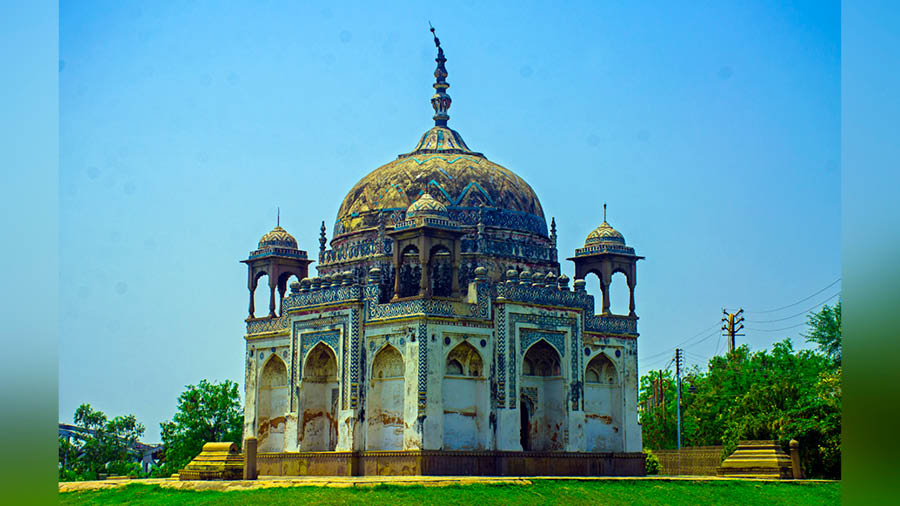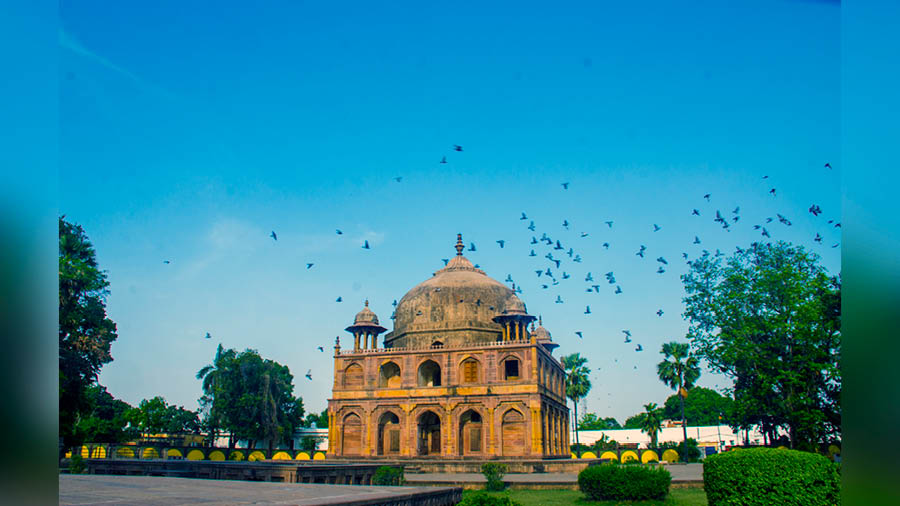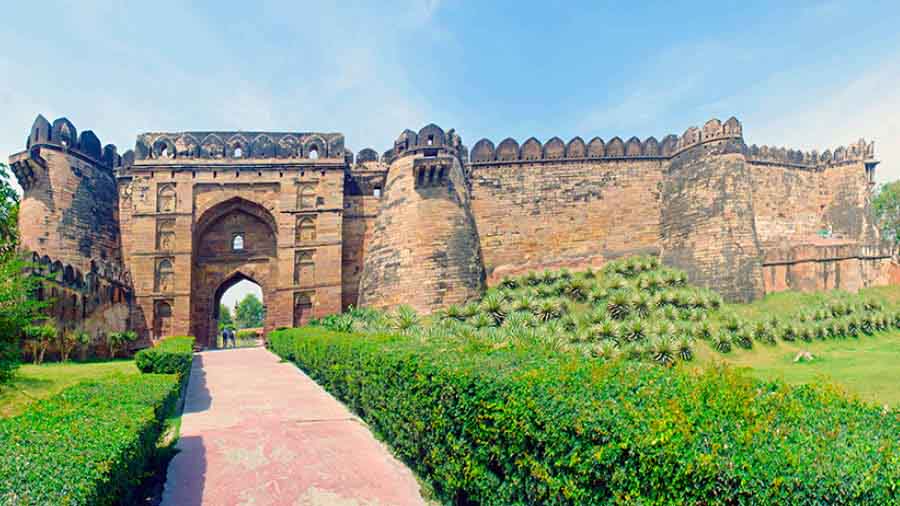Varanasi is a holy city in India, known for its charming ghats, serpentine lanes, ancient temples and chatpata street food, but the ancient city has something much to offer, which include Mughal-style Islamic tombs to pre historic sites dating back to 8th century BCE. The Tomb of Lal Khan and the archeological ruins stand just north of the Malviya Bridge. They are both protected monuments under Archaeological Survey of India (ASI) and housed in a single complex. These can be accessed by a single entry ticket. Although located less than a kilometer away from the northernmost ghat, the ornate tomb of Lal Khan and the scattered archeological ruins are rarely visited by the hordes of tourists visiting Varanasi.
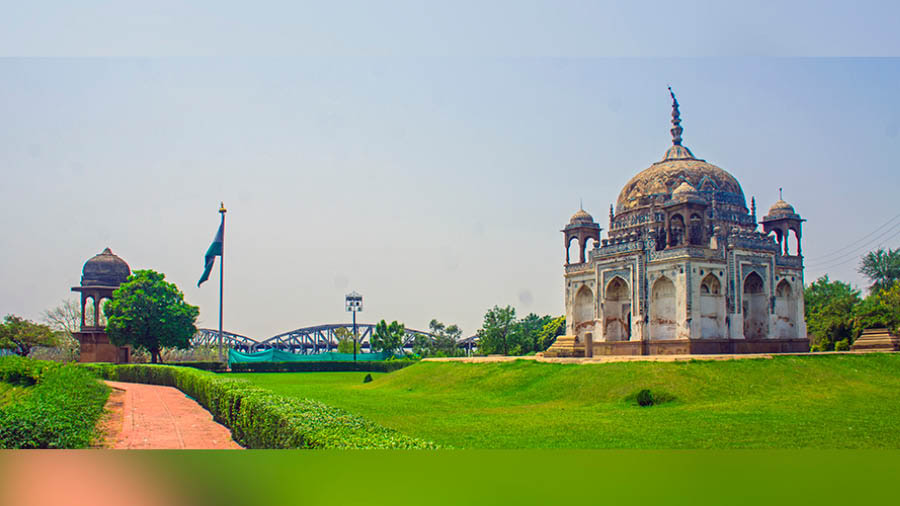
Tomb of Lal Khan, Malviya Bridge and one of the corner chhatris
Lal Khan was the minister and commander of Balwant Sing (reign: 1740 – 70) the King of Varanasi (then Benaras). After the death of Aurangzeb in 1707, the mighty Mughal Empire started disintegrating and the powerful states started declaring their independence. During that time, Varanasi was under the patronage of Mir Rustam Ali, who entrusted the property to a local Brahmin named Masa Ram, leading to the formation of the independent Benaras state. Balwant Singh was Masa Ram’s son, who took control of the Benaras state after his father’s death in 1740.
Lal Khan was known as a strict enforcer of law. He has a huge contribution in the development of the city of Varanasi. His last wish was to be buried in a place so that he could keep an eye on the gateway of the royal palace. Balwant Singh fulfilled the last wishes of his trusted commander by building him a magnificent tomb just north of the city of Benaras, overlooking the ghats and the royal gateway.

Another view of the Lal Khan Tomb
Sadly the royal gateway has long gone and the views of the ghats have largely been blocked by the Malviya Bridge, but the tomb of Lal Khan still stands as a mute witness of 250 years of history. The 1773 built tomb stands at the centre of a Mughal-styled char bagh, walled gardens with chhatris on four corners. The chhatri on the northwest corner has been knocked down by the expanding Grand Trunk Road but the other three still stand and the one on the northeast corner functions as the office of the ASI guard. The square tomb stands on a square plinth, with a few scattered graves.

Ornamentations on the walls of Lal Khan Tomb
The tomb is crowned with a single dome flanked with chhatris on four corners. Each side has three arches with the central arches slightly higher than the side ones. The highlight of the tomb is the decorative multi-coloured tile work. Sadly, the colours have faded, robbing the tomb of its elegant look.
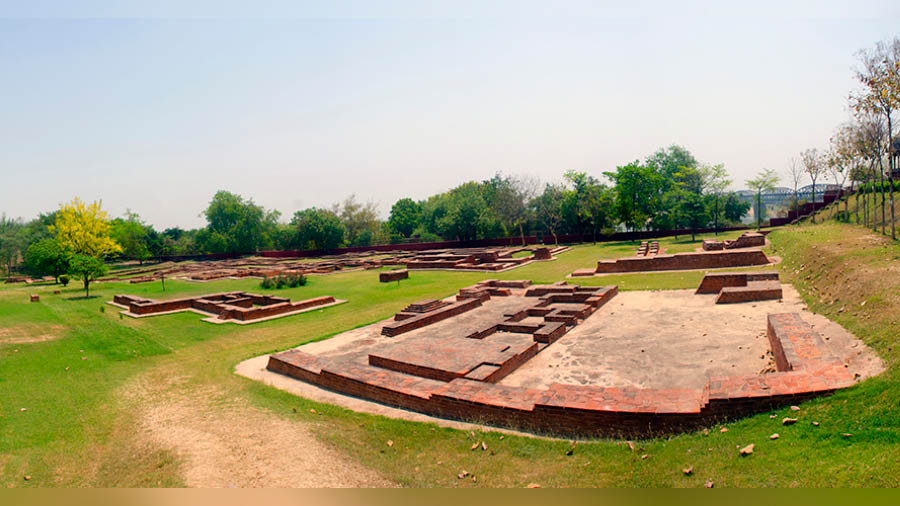
The scattered archaeological findings of Rajghat, Varanasi
Just east of the Lal Khan’s Tomb lie the scattered archaeological ruins dating back to the 8th century BCE. Today it is known as Rajghat. It was a result of a chance discovery in 1940 when the nearby Kashi Railway station was extended. When a portion of a brick structure was revealed during the extension, the ASI got involved and led to an archeological dig. Later, a couple of digs followed under the supervision of the Benaras Hindu University (BHU) revealing evidence of a continuous settlement right from the 8th century BCE. Varanasi is always considered a piece of antiquity and one may be reminded of Mark Twain’s famous quote, “…older than history, older than tradition, older even than legend and looks twice as old as all of them put together.”
It is probably Rajghat where it all began. Apart from extensive pottery and metal objects the digs revealed a brick structure, which probably dates back to the 2nd century BCE. Today, the ruins look like a scattered zig-saw puzzle and with no proper information visitors are kept in the dark.
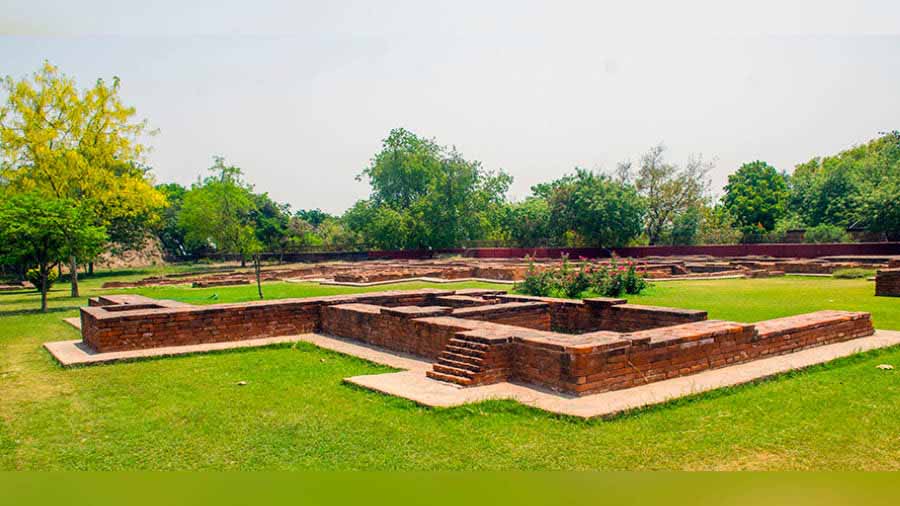
A closer view of Rajghat
So, next time in Varanasi do take out a couple of hours to go beyond the tourist trail. Discover the lesser known history of one the oldest continuous settlements on the planet.
Travel details:

Tomb of Lal Khan towers above the archeological sites of Rajghat
Timing: 6am – 7pm
Entry fee: Rs 20 (payment is only through QR code, no cash accepted)
Photography: Allowed
Entry inside the Lal Khan’s Tomb is prohibited


